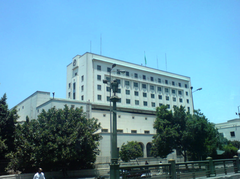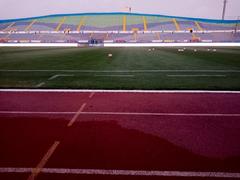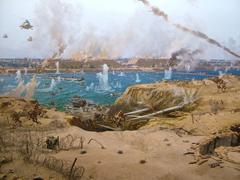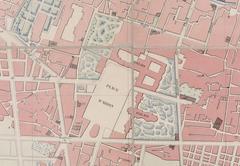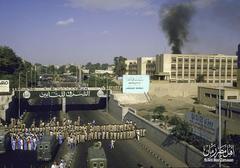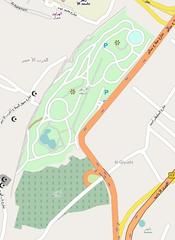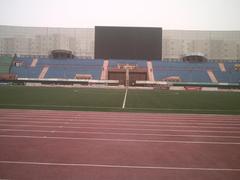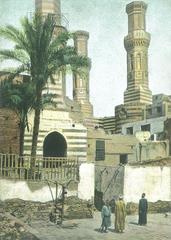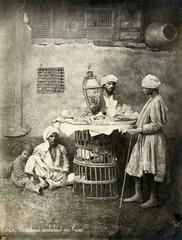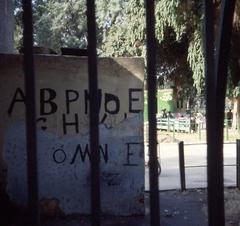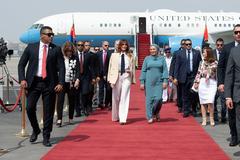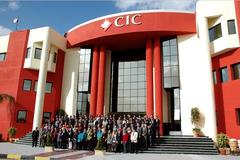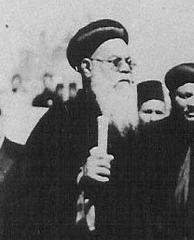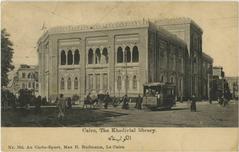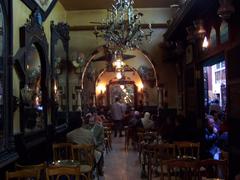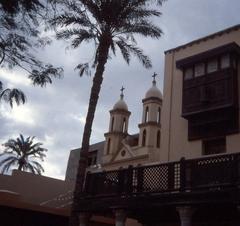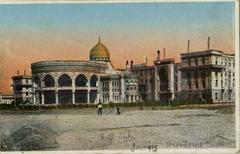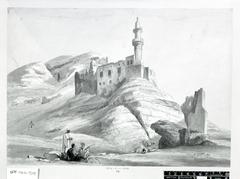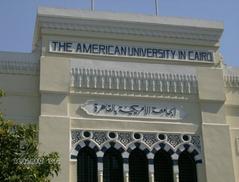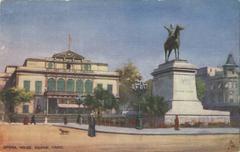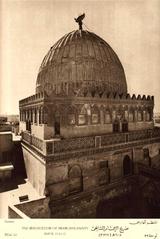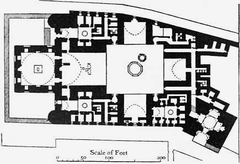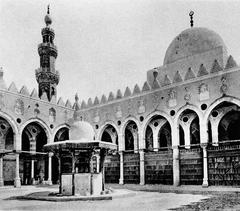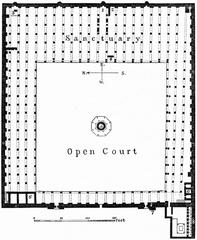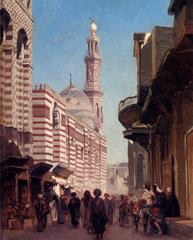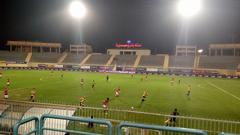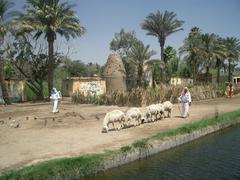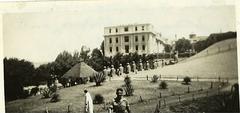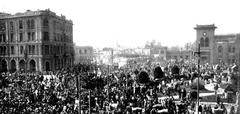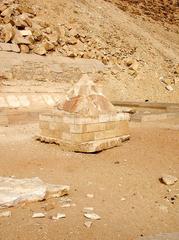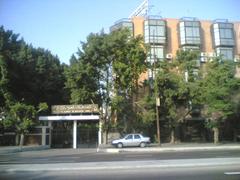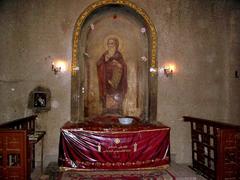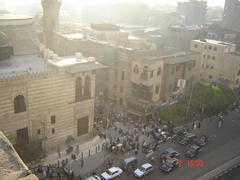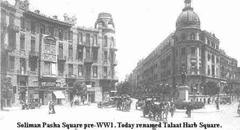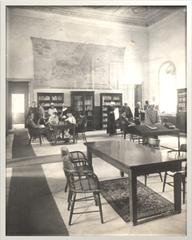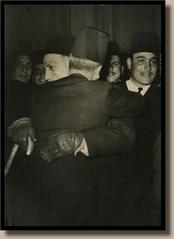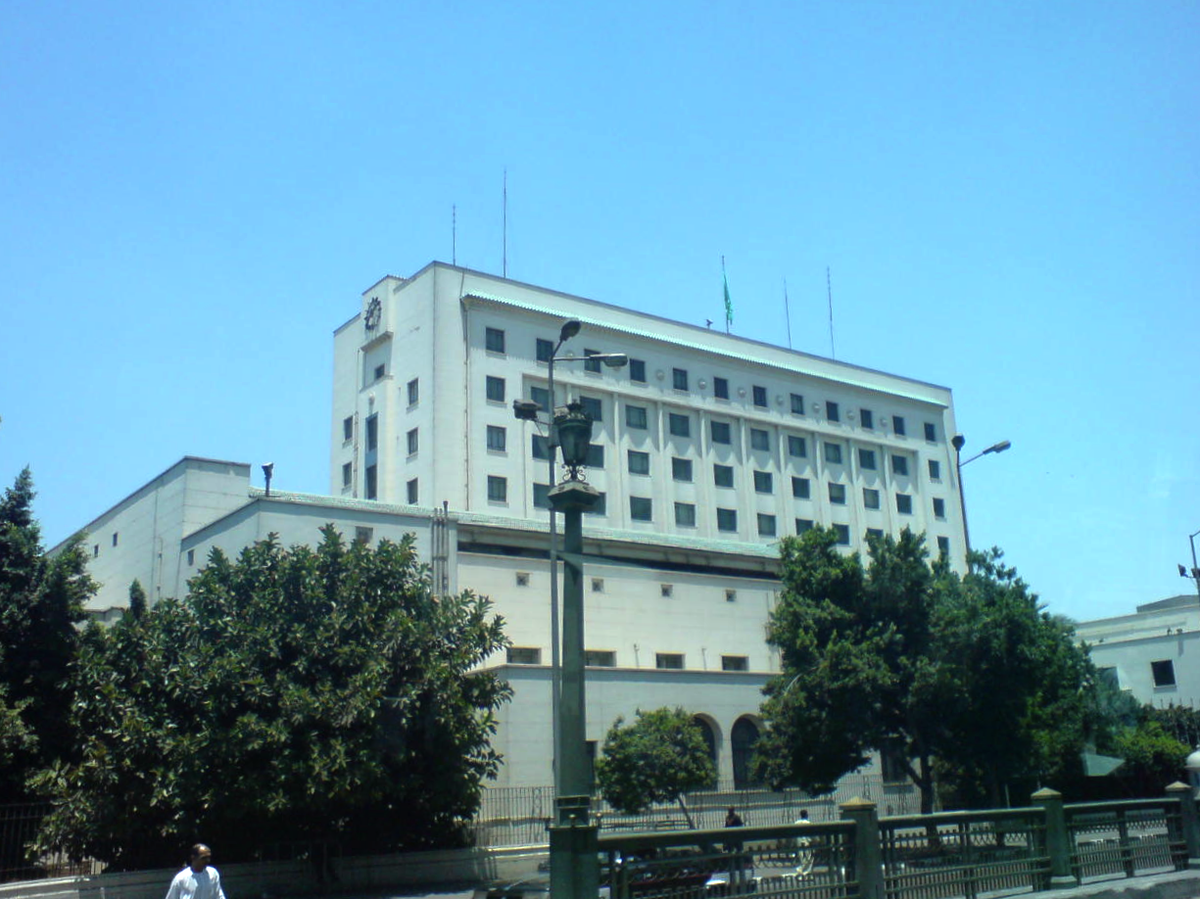
Visiting the Arab League Headquarters in Cairo, Egypt: Guide, Tickets, Hours, and Tips
Date: 14/06/2025
Introduction
Situated in the heart of Cairo’s historic Tahrir Square, the Arab League Headquarters is a striking symbol of Arab unity, diplomacy, and modern Middle Eastern history. Established in 1945, this iconic building serves as the nerve center for the League’s political and diplomatic activities while embodying aspirations for pan-Arab cooperation and modernization. For travelers interested in Cairo’s historical, political, and cultural landscape, the Arab League Headquarters offers a unique perspective—even if interior access is restricted due to its diplomatic function.
This detailed guide provides visitors with comprehensive insights into the Arab League Headquarters, covering its history, architectural significance, practical visitor information, nearby attractions, and essential travel tips. Whether you are a history enthusiast, architecture buff, or a curious traveler, understanding this influential landmark will enrich your experience of Cairo.
For additional background and visitor information, see landioustravel.com, cairobserver.com, and Intrepid Scout.
Table of Contents
- Introduction
- Historical Background
- Practical Visitor Information
- Nearby Attractions and Travel Tips
- Key Historical Events
- Symbolism and Regional Influence
- Urban Redevelopment and Modern Context
- Frequently Asked Questions (FAQ)
- Media and Visual Recommendations
- Conclusion
Historical Background
Foundation and Early Role
The Arab League was founded on March 22, 1945, in Cairo by Egypt and six other Arab states: Iraq, Transjordan (now Jordan), Lebanon, Saudi Arabia, Syria, and Yemen (landioustravel.com). The League’s goal has always been to promote unity and cooperation among Arab nations, especially in the wake of WWII and the decline of colonial influence. Cairo was selected as the permanent seat for the League due to its central role in the Arab world.
Architectural Significance
Completed in 1955 and designed by the prominent Egyptian architect Mahmoud Riad, the Arab League Headquarters stands as a modernist landmark on Tahrir Square (Riad Architecture). The building’s clean lines and contemporary materials reflect the aspirations of post-colonial Arab states. Its location, previously occupied by British Army barracks, marks a symbolic transition from colonial rule to Arab self-determination.
The headquarters’ façade and interiors blend modernist elements with traditional Arab motifs, and its grand meeting hall—featuring a round table surrounded by member states’ flags—visually represents the ideals of sovereign equality and cooperation.
Political and Diplomatic Impact
From its inception, the headquarters has hosted numerous pivotal Arab League summits, emergency meetings, and negotiations, addressing issues such as the Palestinian cause, regional conflicts, and peace efforts. Notably, the League temporarily relocated to Tunis from 1978 to 1989, returning to Cairo after Egypt’s readmission (landioustravel.com). The building continues to be the epicenter of Arab diplomacy, facilitating dialogue and collective action among its 22 member states.
Practical Visitor Information
Location and Accessibility
The Arab League Headquarters is located on the southern edge of Tahrir Square, adjacent to the Nile Corniche, placing it at the crossroads of Cairo’s political and cultural life (Riad Architecture). The area is easily accessible via the Sadat Metro Station, Cairo’s main interchange, as well as by taxi and ride-hailing apps like Uber and Careem (Intrepid Scout). Wide sidewalks and crosswalks make the area generally pedestrian-friendly, though visitors should exercise caution due to heavy traffic.
Visiting Hours and Entry
As an active diplomatic institution, the Arab League Headquarters does not offer regular public visiting hours or ticketed entry. Public access is generally limited to the building’s exterior, which can be viewed and photographed from Tahrir Square and the surrounding streets. Interior access is reserved for official delegations, conference attendees, and those with pre-arranged appointments.
Occasionally, special events, exhibitions, or open days may grant limited public access. These opportunities are typically announced through official Arab League channels or the Egyptian Ministry of Foreign Affairs. Always check ahead and plan accordingly.
Tickets and Guided Tours
There are no publicly available tickets for the Arab League Headquarters. When permitted, official visits or guided tours are usually restricted to special events or educational groups and require advance application or invitation (Arab.org). Guided tours, when offered, may highlight the building’s architecture, diplomatic history, and the role of the League in regional affairs.
Security and Photography
Given the building’s political importance, security around the Arab League Headquarters is high, especially during major events or summits (Intrepid Scout). Expect visible security personnel, checkpoints, and restricted access. Visitors should carry valid identification at all times and comply with security instructions.
Photography of the building’s exterior is generally allowed from public spaces, but avoid photographing security personnel or sensitive installations (e-Visa Egypt). Interior photography is strictly prohibited unless specific permission is granted.
Nearby Attractions and Travel Tips
While public access to the headquarters’ interior is limited, its central location makes it an excellent starting point for exploring Cairo’s rich cultural landscape:
- Egyptian Museum: Home to over 120,000 ancient artifacts, including the treasures of Tutankhamun (Encounters Travel).
- Cairo Opera House: A center for performing arts, just a short walk or drive across the Nile.
- Qasr El-Nil Bridge: Offers scenic views and connects Tahrir Square to Gezira Island and the Zamalek district.
- Umar Makram Mosque: Notable for its modern architecture.
- Khan el-Khalili Bazaar: Famous market for souvenirs and traditional crafts.
- Corniche el-Nil: A picturesque river promenade ideal for strolls or boat rides.
- Al-Azhar Park: Provides panoramic views of Islamic Cairo and a tranquil escape.
Practical Tips:
- Transport: Use taxis or ride-hailing apps for convenience; public transport can be confusing for non-Arabic speakers.
- Dress Code: Modest attire is recommended.
- Currency: The local currency is the Egyptian Pound (EGP); cash is often preferred for small purchases.
- Hydration: Carry bottled water, especially in warmer months.
- Safety: Be vigilant in crowded areas and mindful of pickpockets.
- Accessibility: Most public areas are accessible, but sidewalks can be uneven.
Key Historical Events
- 1978-1989 Relocation: The League moved its headquarters to Tunis after Egypt’s peace treaty with Israel, returning to Cairo when Egypt was readmitted (landioustravel.com).
- Landmark Summits: Including the 2025 Emergency Arab Summit for Palestine, resulting in declarations like the “Bahrain Declaration” (dailynewsegypt.com).
- Mediation Efforts: The headquarters has hosted negotiations on crises in Iraq, Syria, Libya, Yemen, and other regional hotspots.
Symbolism and Regional Influence
The Arab League Headquarters is a potent symbol of pan-Arab identity and Egypt’s leadership in the region. Its architecture and function reflect the ongoing quest for modernization and cooperation among Arab states. The roundtable in the main hall visually expresses the principle of sovereign equality, while the Palestinian flag’s constant presence underscores the centrality of the Palestinian cause (landioustravel.com).
Urban Redevelopment and Modern Context
Since 2019, Tahrir Square and its environs have undergone significant redevelopment, including facade restoration, landscaping, and the installation of ancient artifacts like a Pharaonic obelisk. These changes have enhanced the area’s visual appeal and pedestrian accessibility, though some critics argue the renovations have shifted the square’s symbolic focus (The New Arab).
Dining, shopping, and leisure options abound nearby, from street food stalls offering Egyptian classics to upscale restaurants and boutique hotels in Garden City.
Frequently Asked Questions (FAQ)
Can the public visit the Arab League Headquarters?
Public access to the interior is generally restricted. Occasionally, special events or open days provide limited access by invitation or prior arrangement.
What are the visiting hours?
There are no regular public visiting hours. The exterior is viewable year-round, best during daylight hours.
Are tickets required?
No public tickets are sold. Access, when granted, is by invitation or arrangement.
Is the building accessible for people with disabilities?
The area around Tahrir Square is generally accessible, but interior facilities may be limited. Contact ahead for specific accommodations.
Is photography allowed?
Photography of the exterior is allowed from public spaces; interior photography is generally prohibited.
How do I get there?
The site is easily accessible via the Sadat Metro Station, taxis, ride-hailing apps, and public buses.
Is the area safe?
Tahrir Square is generally safe, but visitors should remain aware of political events or demonstrations.
Media and Visual Recommendations
For a richer experience, explore high-quality images and virtual tours of the Arab League Headquarters and Tahrir Square available on official tourism websites. Add descriptive alt text to images for accessibility and SEO, such as “Arab League Headquarters Cairo exterior view.”
Conclusion
The Arab League Headquarters in Cairo is a beacon of Arab unity, diplomacy, and resilience, set against the dynamic backdrop of Tahrir Square. While interior visits are reserved for official purposes, the building’s architectural prominence and rich political symbolism make it a compelling destination for those exploring Cairo’s historical and cultural heart. By combining a visit to the headquarters’ exterior with nearby attractions, travelers gain a deeper appreciation of the city’s multifaceted heritage and the pivotal role Egypt plays in the Arab world.
For the most current information on special events, security updates, and public access, consult the Arab League’s official website and local travel advisories.
Plan your visit today and discover more about Cairo’s historical treasures. Download the Audiala app for guided tours, updates on Cairo sites, and travel tips. Follow us on social media for the latest news and visitor information.
Official Resources and Further Reading
- landioustravel.com
- cairobserver.com
- Arab.org
- Riad Architecture
- The New Arab
- dailynewsegypt.com
- Intrepid Scout
- Encounters Travel
- e-Visa Egypt
- Cairo Water Week
- Nasser Youth Movement
